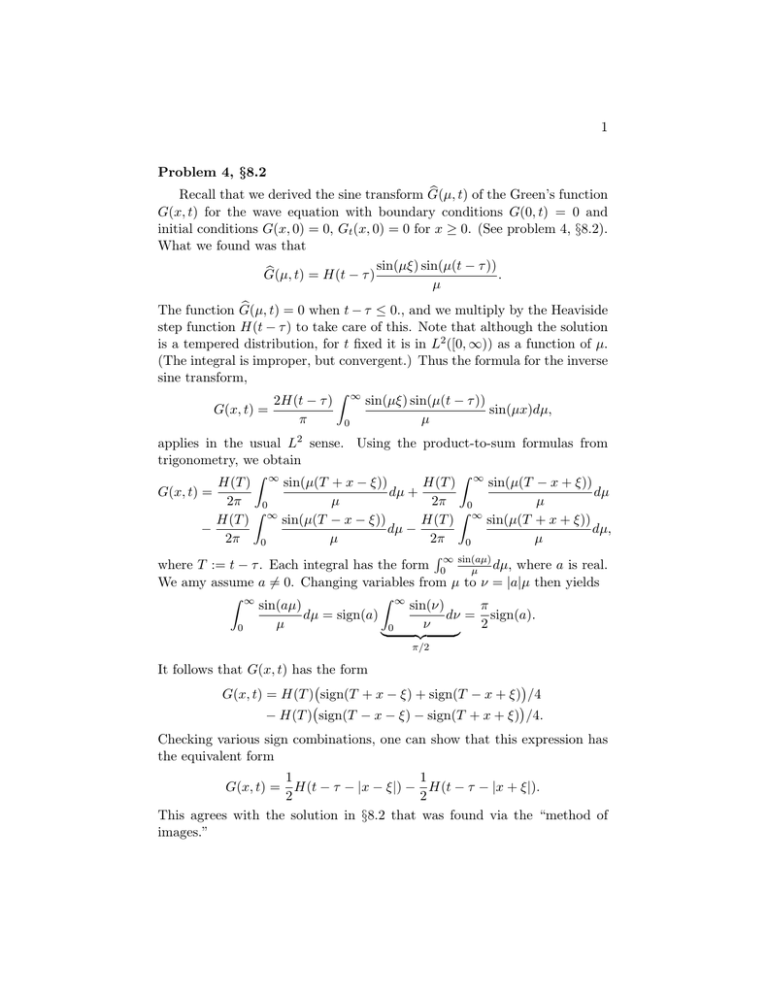1 Problem 4, §8.2 Recall that we derived the sine transform b
advertisement

1
Problem 4, §8.2
b t) of the Green’s function
Recall that we derived the sine transform G(µ,
G(x, t) for the wave equation with boundary conditions G(0, t) = 0 and
initial conditions G(x, 0) = 0, Gt (x, 0) = 0 for x ≥ 0. (See problem 4, §8.2).
What we found was that
b t) = H(t − τ ) sin(µξ) sin(µ(t − τ )) .
G(µ,
µ
b t) = 0 when t − τ ≤ 0., and we multiply by the Heaviside
The function G(µ,
step function H(t − τ ) to take care of this. Note that although the solution
is a tempered distribution, for t fixed it is in L2 ([0, ∞)) as a function of µ.
(The integral is improper, but convergent.) Thus the formula for the inverse
sine transform,
Z
2H(t − τ ) ∞ sin(µξ) sin(µ(t − τ ))
sin(µx)dµ,
G(x, t) =
π
µ
0
applies in the usual L2 sense. Using the product-to-sum formulas from
trigonometry, we obtain
Z
Z
H(T ) ∞ sin(µ(T + x − ξ))
H(T ) ∞ sin(µ(T − x + ξ))
G(x, t) =
dµ +
dµ
2π
µ
2π
µ
0
0
Z
Z
H(T ) ∞ sin(µ(T − x − ξ))
H(T ) ∞ sin(µ(T + x + ξ))
−
dµ −
dµ,
2π
µ
2π
µ
0
0
R∞
where T := t − τ . Each integral has the form 0 sin(aµ)
µ dµ, where a is real.
We amy assume a 6= 0. Changing variables from µ to ν = |a|µ then yields
Z ∞
Z ∞
sin(aµ)
sin(ν)
π
dµ = sign(a)
dν = sign(a).
µ
ν
2
0
|0
{z
}
π/2
It follows that G(x, t) has the form
G(x, t) = H(T ) sign(T + x − ξ) + sign(T − x + ξ) /4
− H(T ) sign(T − x − ξ) − sign(T + x + ξ) /4.
Checking various sign combinations, one can show that this expression has
the equivalent form
1
1
G(x, t) = H(t − τ − |x − ξ|) − H(t − τ − |x + ξ|).
2
2
This agrees with the solution in §8.2 that was found via the “method of
images.”





